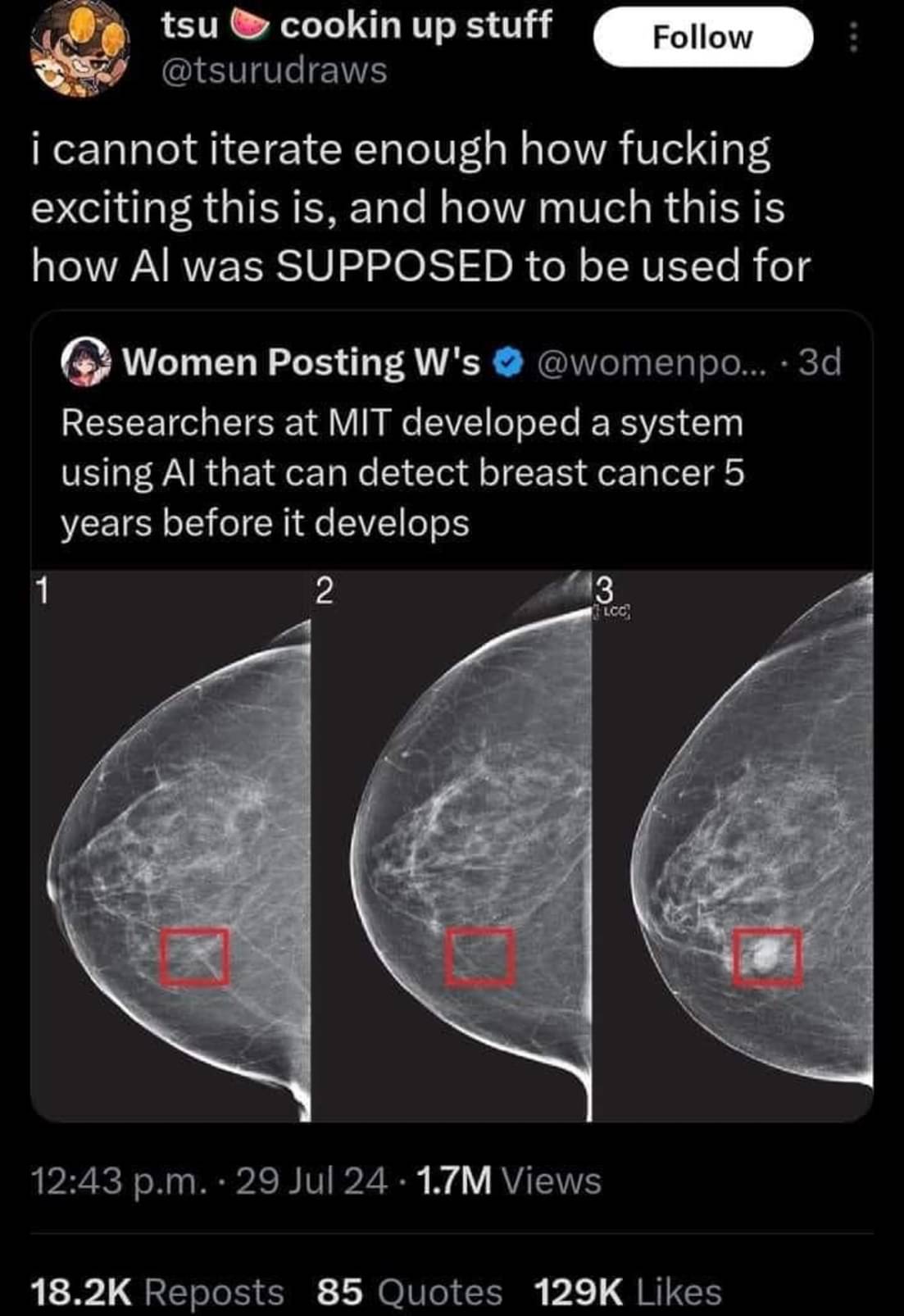this post was submitted on 02 Aug 2024
1522 points (98.4% liked)
Science Memes
11148 readers
3046 users here now
Welcome to c/science_memes @ Mander.xyz!
A place for majestic STEMLORD peacocking, as well as memes about the realities of working in a lab.

Rules
- Don't throw mud. Behave like an intellectual and remember the human.
- Keep it rooted (on topic).
- No spam.
- Infographics welcome, get schooled.
This is a science community. We use the Dawkins definition of meme.
Research Committee
Other Mander Communities
Science and Research
Biology and Life Sciences
- !abiogenesis@mander.xyz
- !animal-behavior@mander.xyz
- !anthropology@mander.xyz
- !arachnology@mander.xyz
- !balconygardening@slrpnk.net
- !biodiversity@mander.xyz
- !biology@mander.xyz
- !biophysics@mander.xyz
- !botany@mander.xyz
- !ecology@mander.xyz
- !entomology@mander.xyz
- !fermentation@mander.xyz
- !herpetology@mander.xyz
- !houseplants@mander.xyz
- !medicine@mander.xyz
- !microscopy@mander.xyz
- !mycology@mander.xyz
- !nudibranchs@mander.xyz
- !nutrition@mander.xyz
- !palaeoecology@mander.xyz
- !palaeontology@mander.xyz
- !photosynthesis@mander.xyz
- !plantid@mander.xyz
- !plants@mander.xyz
- !reptiles and amphibians@mander.xyz
Physical Sciences
- !astronomy@mander.xyz
- !chemistry@mander.xyz
- !earthscience@mander.xyz
- !geography@mander.xyz
- !geospatial@mander.xyz
- !nuclear@mander.xyz
- !physics@mander.xyz
- !quantum-computing@mander.xyz
- !spectroscopy@mander.xyz
Humanities and Social Sciences
Practical and Applied Sciences
- !exercise-and sports-science@mander.xyz
- !gardening@mander.xyz
- !self sufficiency@mander.xyz
- !soilscience@slrpnk.net
- !terrariums@mander.xyz
- !timelapse@mander.xyz
Memes
Miscellaneous
founded 2 years ago
MODERATORS
you are viewing a single comment's thread
view the rest of the comments
view the rest of the comments

That's actually really smart. But that info wasn't given to doctors examining the scan, so it's not a fair comparison. It's a valid diagnostic technique to focus on the particular problems in the local area.
"When you hear hoofbeats, think horses not zebras" (outside of Africa)
AI is weird. It may not have been given the information explicitly. Instead it could be an artifact in the scan itself due to the different equipment. Like if one scan was lower resolution than the others but you resized all of the scans to be the same size as the lowest one the AI might be picking up on the resizing artifacts which are not present in the lower resolution one.
I'm saying that info is readily available to doctors in real life. They are literally in the hospital and know what the socioeconomic background of the patient is. In real life they would be able to guess the same.
The manufacturing date of the scanner was actually saved as embedded metadata to the scan files themselves. None of the researchers considered that to be a thing until after the experiment when they found that it was THE thing that the machines looked at.